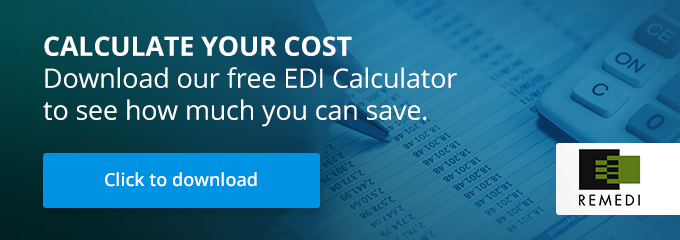
Financial EDI is a linchpin of today’s economy. It allows the fast, seamless transfer of money from one organization to another thanks to the transmission of information in standardized, machine-readable format (known as financial EDI standards).
Because there are so many payment types, a number of financial EDI transaction codes have been created to facilitate payments. This article explores some of the most common transaction types, broken down by categories.
Invoicing and Crediting
One of the most common financial EDI transaction types is invoicing. The benefit of using financial EDI to transmit invoices is that the customer cannot say the invoice got lost in the mail; there is a record that the digital invoice was received. EDI 810 is the code for an invoice, and EDI 811 is the code for a consolidated invoice/statement. When the customer wants to notify the vendor that the invoice will be paid, the buyer would use EDI 820.
Sometimes, a customer will earn a credit from a vendor. With financial EDI, the customer and the vendor have proof that the credit was recorded. The code for credit/debit adjustment is EDI 812.
Loans
Loans are another common financial EDI transaction category, as consumers and businesses alike require loans.
Students, for example, sometimes need loans in order to attend school. There are four financial EDI transaction codes that come into play in this situation: EDI 135 (the student loan application), EDI 139 (the student loan guarantee result), EDI 144 (the student loan transfer and status verification), and EDI 191 (student loan pre-claims and claims).
Mortgages are equally common, and there are a few financial EDI transaction codes that apply to this type of loan. EDI 198d is for loan verification information, while EDI 199d is for mortgage settlement information; EDI 264 is for mortgage loan defaults, and EDI 266 is for a mortgage record change.
Healthcare Payments
The healthcare industry relies heavily upon financial EDI to transmit payments. In fact, the use of financial EDI within the healthcare industry is mandated by HIPAA. The goal of mandating the use of financial EDI was to make the healthcare industry operate more efficiently.
Common financial EDI transaction codes within the healthcare industry include 835 for submitting payments, 820 for payroll deductions; NCPDP Telecommunications Standard version 5.1 for transmitting retail pharmacy claims; and 837 for submitting claim information.
Federal and State Government Codes
Private companies are not the only ones that use financial EDI to transfer payments; the US federal government and state governments use financial EDI to ensure the smooth and efficient processing of transactions, too.
There are two common examples of financial EDI in government: EDI 813, the electronic filing of tax return data, and EDI 521, income or asset offset for child support.
Financial EDI has a variety of uses in a multitude of industries and sectors across the country. Are you ready to use financial EDI?
Calculate your cost Download our free EDI Calculator to see how much you can save.



